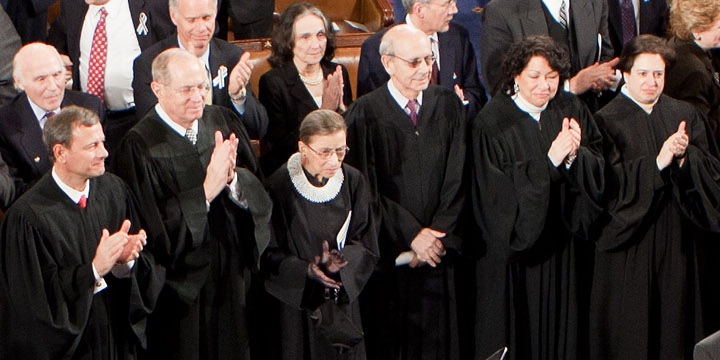
What does it take to become a Judge or Justice?
It’s Competitive!
It’s competitive to earn your spot on the judicial bench. According to the U.S. Bureau of Labor Statistics, in 2010 there were approximately 62,700 judges, mediators and hearing officers in the country versus around 728,200 lawyers—that’s less than one judge for every 10 lawyers in the U.S.
“Does this mean you should dismiss this calling altogether? Absolutely not!”
Whether you are still in high school, just beginning your university studies, in the middle of law school or even practicing as a lawyer, you may be thinking the chances of you wearing a robe and presiding over a legal proceeding are pretty small. Does this mean you should dismiss this calling altogether? Absolutely not!
Multiple Career Paths
While there are probably numerous kinds of paths that have been trodden by those who have successfully become judges, learning about some of their experiences getting to the bench can be helpful, and inspirational!
Hon. Teri L. Jackson
Hon. Teri L. Jackson serves as a Judge for the Superior Court of San Francisco. She is also an adjunct professor at the University of San Francisco School of Law and Hastings College of the Law. A Zealous Women profile written by Heather T. Rankie (January 2012) how after high school, Jackson attended Georgetown University and Oxford University’s Queen’s College to gain her legal education; then she briefly worked in private practice.
Shortly after that, she was hired by the District Attorney’s Office, where she served for 14 years, including as Assistant District Attorney. Part of what made her an attractive candidate to the District Attorney’s Office was her interest in domestic violence—“crime which at the time was in its infancy of prosecution and this coupled with her particular background helped her land the job,” wrote Rankie. “…During her tenure as a prosecutor, Teri helped shape the evidence code on admissibility of certain domestic violence related evidence.”
Before being appointed to the San Francisco Superior Court Bench, Jackson worked for the firm Orrick, Herrington & Sutcliffe LLP to gain more varied legal experiences, trying cases from bankruptcy litigation and intellectual property to white collar defense.
U.S. District Judge Gray H. Miller
U.S. District Judge Gray H. Miller has been in his position (in the Southern District of Texas) since 2006. A recent University of Houston Law Center article (“Federal judge tells UHLC students how he became ‘The Accidental Jurist’”) describes Miller’s eclectic experiences before reaching the bench. His CV includes working a summer as a congressional page, attending the U.S. Merchant Marine Academy (he had once thought he would be a sea captain), working as a clothes salesman and working as a police officer for the Houston PD for nine years.
While serving as an officer, Miller went to night school to gain legal training. After graduating with his law degree he was hired by Fulbright & Jaworski. He credits his time at sea for being hired, since maritime law was a major area of practice at the time. After 28 years practicing law, Miller applied to become a judge with the Southern District. The first position he applied for was filled by another candidate. But for the second position he applied for, he was chosen by a selection committee. Then, “He was recommended by Senators Hutchison and Cornyn, went through a lengthy vetting process, was nominated by President George W. Bush, and approved unanimously by the Senate in 2006,” states the University of Houston Law Center article.
These are just two of many career paths of how successful legal professionals have made it the bench. Take it upon yourself to read the biographies or CVs of other Judges—or better yet talk to some in person—to get inspired! Although the journey is competitive and challenging, it is obtainable!



